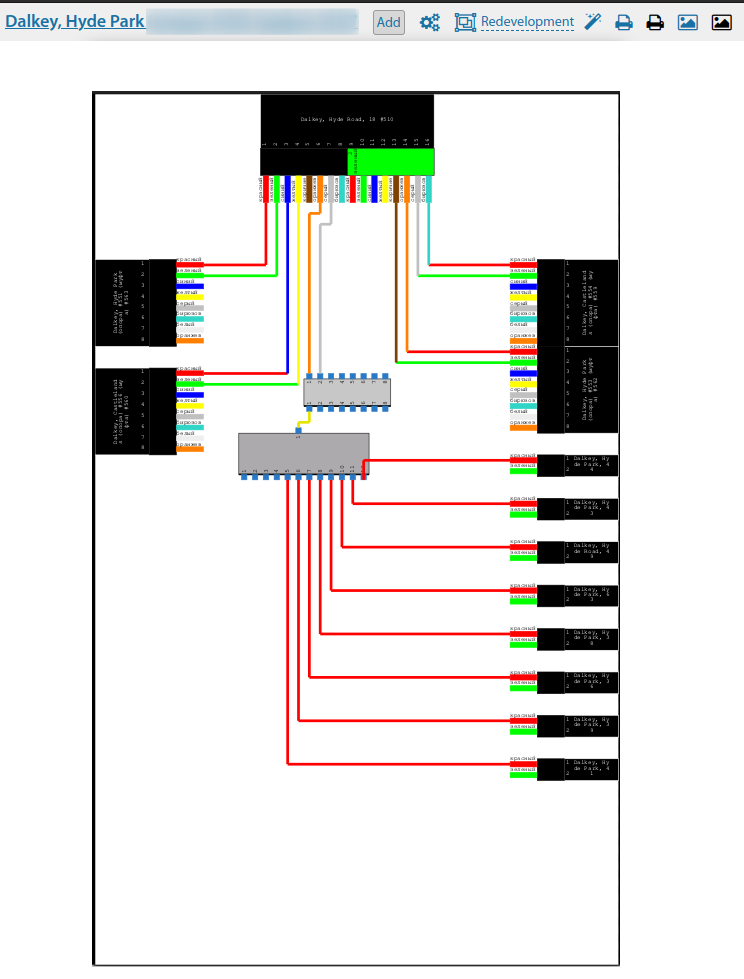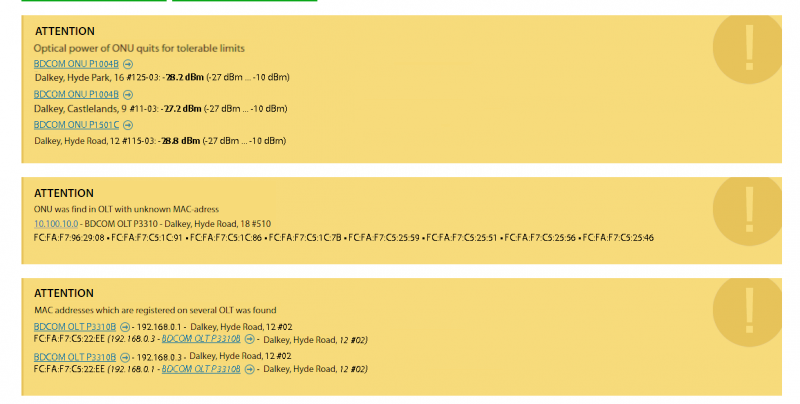PON EN
PON (Passive optical network) is a passive optical network technology. The PON access network is based on a tree-like fibre-optic architecture with passive optical splitters at the nodes and is a cost-effective way to guarantee broadband access to information. At the same time, PON architecture has the necessary efficiency of network node and bandwidth scaling, depending on the current and future needs of users.
The ERP "UserSide" has a set of tools for documenting the PON and provides certain convenience in monitoring its effective operation.
Optical communication lines
PON lines are documented in Cable lines (see also Line routes on the map)

For FOCLs with different numbers of OF, it is possible to specify their representation in different colours. It is also possible to specify a specific colour for any FOCL.
It is also possible to view PON lines separately - just select the required map layer.

In PON the commutation is performed using optical dividers. The Switching scheme has separate tools for adding dividers and their relative switching.

A block scheme can be constructed for each object, which is especially relevant for PON-trees. This scheme will reflect the calculated attenuation values. It takes into account:
- outgoing power at PON interfaces of OLTs (normative value specified manually)
- division factors on the dividers
- the linear attenuation on the fibre optic cables, taking into account their metreage
- attenuations on welded and mechanical joints

Equipment
The core of PON is the main terminal (OLT). It contains both Ethernet ports for connecting uplink channels and outgoing optical PON interfaces. Quite a lot of information can be retrieved from the OLT. "UserSide" processes OLT data with slightly different algorithms than other switch models, so the data output is more structured for the specifics of PON and this OLT model
See also: ONU

Both for the system and for each OLT it is possible to specify limit values for the optical signal power level. This data is used when generating reports and also for the usm_pon module. (see below). If the current data exceeds the specified limits, the exceeding values will be marked in red.

The end points of the network are the user terminals (ONU). They are usually unmanaged, have no IP address and are often difficult, if not impossible, to capture information from it. However, this is often unnecessary, as all the basic information is stored on the OLT and is stored for each user terminal connected to it, namely:
- PON interface number
- incoming signal strength
- distance to OLT
- status of the ONU uplink port and traffic through it
- status of other ONU ports
When opening an ONU card, the ERP "UserSide" automatically retrieves the necessary information from the upstream OLT and displays it in the ONU card, which visually looks as if it is being monitored directly from the ONU

Monitoring
A separate module usm_pon is used for monitoring. It periodically interrogates all available OLTs and monitors the following indicators:
- the output of the optical signal from the OLT to the ONU is outside the permitted limits
- detecting ONUs on the OLT that are not listed in the UserSide (unknown)
- detection of ONUs which are registered simultaneously on two OLTs
When mismatches are detected, information messages will be displayed on the main page

A list of connected ONUs can be viewed on the OLT:

The system supports recording the history of signal level changes by ONU

A list of ONU can be displayed on a map (based on the coordinates where this ONU is installed) with their signal levels

Also see: FAQ. Activity ONU